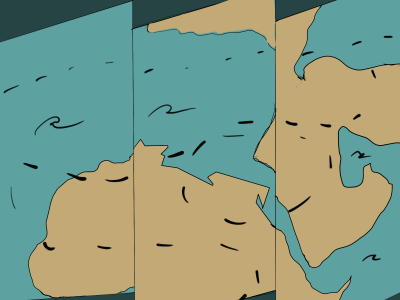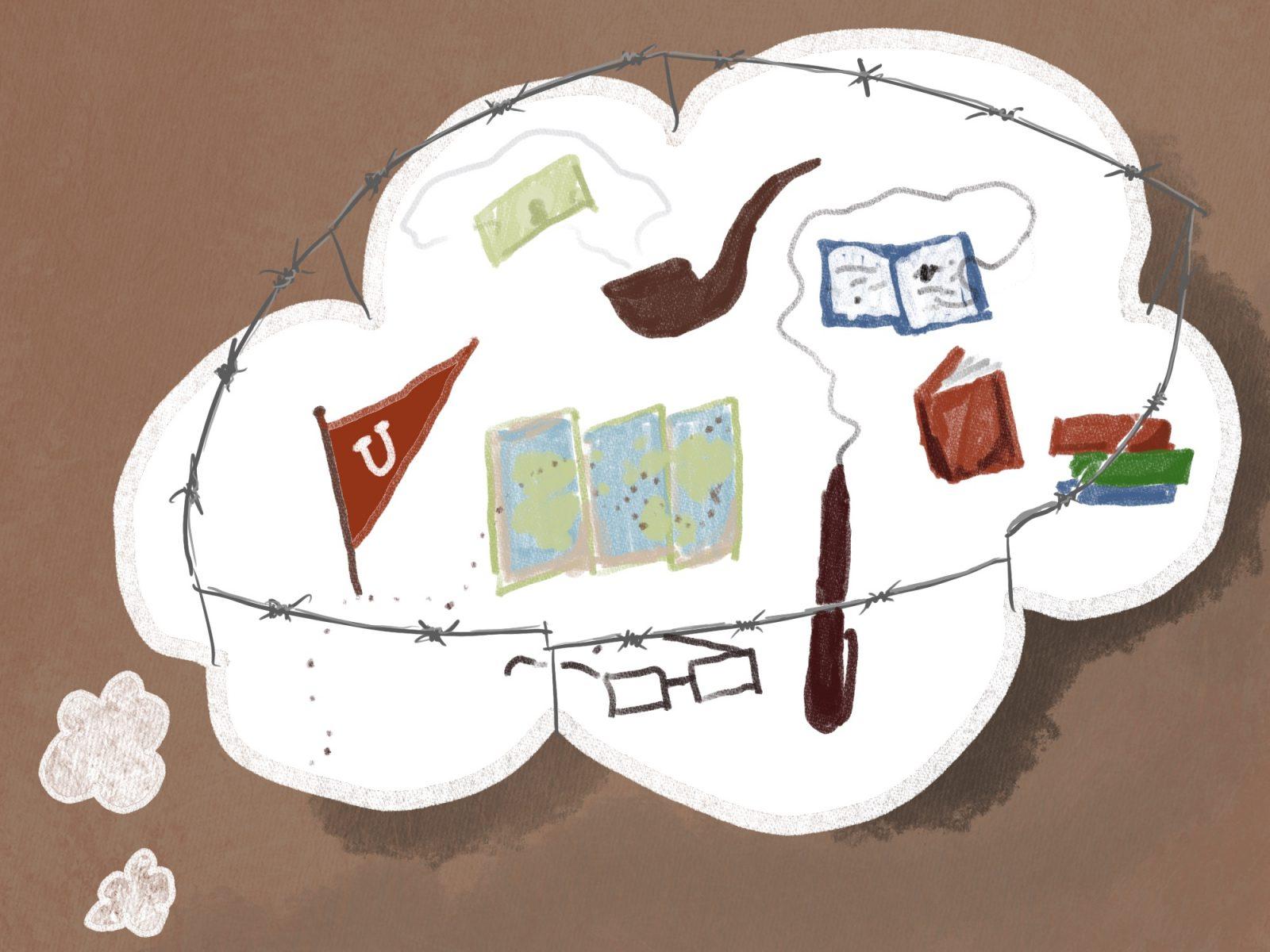At Boston University, similarly to many other institutions, it is not uncommon to encounter the standard International Relations major focusing their region on what is known as “MENA” — I myself am such a stereotype.
However, it is quite unclear what “MENA” actually entails. Many schools with International Relations programs use the shorthand MENA to refer to the region of the Middle East and North Africa. While the term has become quite popular, the historical and current day contentions about it are often neglected.

Eurocentrism and the label of the “Middle East” are forever and inextricably linked. After all, the title “Middle East” essentially exists to describe the region east of what was believed, or at least treated as, the center of the globe — Europe. Thus, the term Middle East does not even do justice to the region by allowing it to have its own identity, rather focusing on European supremacy.
In fact, the term was coined and popularized in the 1900s by both postwar European imperialists and the American naval officer, diplomat and historian Admiral Alfred Thayer Mahan — who flimsily defined it to designate “the area between Arabia and India.”
Furthermore, both these parties were involved in negotiating the Sykes-Picot agreement, infamously remembered for causing irreparable damage to the Middle Eastern geopolitical landscape to this day through the partitioning of culturally and politically significant land, such as Palestine, Syria, Iraq and Lebanon.
With such a background, it should come as no surprise that the present-day application of the term is just as messy and shortsighted as its conception. Since the Middle East is described only vaguely as the region east of the “global center” of Europe, no specific geographic borders actually exist.
Many argue on whether certain nations, such as Turkey, Azerbaijan, Armenia and Georgia, do or don’t make the cut — and BU’s International Relations course directory suffers from the same issue.
One such course is “Modern History and Geopolitics of the Caucasus.” As a regionally-focused course centered on Armenia, Azerbaijan and Georgia, it was not accepted to meet any of the regional tracks for BU’s International Relations major.
This is quite significant, as students who are interested in studying such an underrepresented area of the world are disincentivized from doing so as it does not count towards their degree credits. Bridging the gap in knowledge about the Caucasus remains difficult even at BU, a school known for their strong international affairs program.
All this being said, there is one other stark issue within Boston University’s MENA program. While our other regional tracks for the International Relations major are slightly more specific — Asia, Europe, and Latin America — BU’s MENA track is not necessarily even MENA, but rather, MEA: Middle East and Africa.
Instead of developing two different regional tracks for students wishing to focus on Africa and the Middle East, respectively, BU conflates the two. This is incredibly damaging because it allows BU to paint an inaccurate and lacking picture of two politically, culturally, ethnically and racially diverse regions.
For students who are meant to be well versed in international affairs, as is their degree specialization, conflating the Middle East and Africa is detrimental to their education.
Furthermore, this conflation is damaging as it removes any incentive to provide a greater quantity and variety of regional African and MENA courses. Instead, we are presented with a great number of courses for this regional track which are unfortunately misleading as they conflate two drastically different regions.
Grouping the two together presents the dangerous image that these regions, both consistently represented in Western media and dialogue as “struggling,” are one and the same due to their perceived inferiority in the international system.
Nevertheless, efforts to curb the myriad issues that come with the title “Middle East” do exist. Caitlin Finlayson’s “World Regional Geography,” an educational textbook published in 2019, instead refers to the region as North Africa and Southwest Asia (SWANA). Furthermore, Finlayson educated readers on the Eurocentric history of the term, as well as related religious and ethnic misconceptions about SWANA.
BU could certainly follow suit and reallocate resources to the restructuring of their MEA track to become individual African and SWANA tracks, so as to do justice to the rich history and current-day realities of these two regions.
As for students, bringing SWANA into conversations wherein the Middle East is mentioned or incorporating SWANA into one’s vocabulary could go a long way in disrupting a historically-Eurocentric narrative.























































































































A MENA Major • Sep 26, 2023 at 4:43 pm
I mostly agree with this article’s point — MENA studies at BU is poorly organized and poorly defined, and a shift in frame to SWANA would be useful. I don’t say this because of any particular frustration with the name as such (after all, the Americas are also named pretty Eurocentrically, after a random Italian guy named Amerigo who happened to sail into the right place at the right time). If the Middle East is separated from Africa in the regional tracks, that could create positive change regardless of what we call it.
Currently, we mush Africa, the Arab World, Iran, and Turkey plus other random places (depending on the phase of the moon when the syllabus is being written and the mood of the writer) into one blob and call it MEA. This is frankly absurd. Even in the MENA major, which would seem (from not including all of Africa in the name) to specifically focus on SWANA, contains several courses exclusively focused on Subsaharan Africa. I will graduate with a MENA major in spring, and I can tell you what I’ve been required to learn about Subsaharan Africa could fit on maybe one double-sided sheet of paper.
The reasons for BU’s silliness are pretty obvious. BU has limited resources. But it’s also pretty clear that BU provides stronger resources to some regions than others. On the Pardee School website, there are six faculty assigned to MENA, one of whom (Professor Chehabi) has retired. There is only one tenured professor among them, whose research focuses more towards Southeast Asia and Indonesia. The Africa section is a bit better, with nine faculty and two tenured professors. Europe also has nine current faculty (excluding two emeriti), but *five* tenured faculty and two professors of the practice. Europe’s population is about twice that of the Middle East, and it has five times as many tenured professors; it is by far less than that of sub-Saharan Africa and it has two and a half times as many tenured professors.
I understand that the tenure process is hard, competitive, and long. I also know that many of the MENA faculty are fairly junior. But to a certain degree, the deprioritization of SWANA and Africa and centering of Europe is evident in more than just language used — it’s reflected in the concrete allocation of resources between regions. Providing tenured positions helps build a long-term knowledge base and ensures professors the academic freedom they need to create new and critical work and to engage effectively with modern-day issues.
I don’t mean to start a turf war between SWANA and Europe over resources, but I do hope that BU sees its way to allocating our tuition more equitably between these regions. Especially as we watch the aggressive attacks on academic freedom elsewhere in the United States, a change couldn’t come too soon.